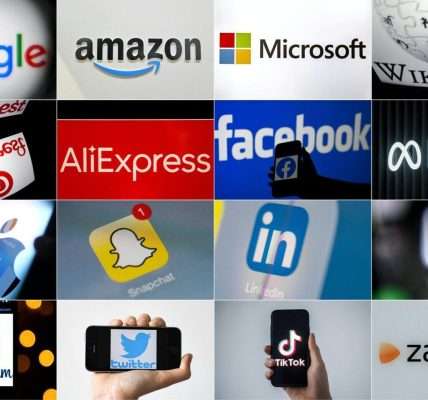The music streaming landscape has undergone a significant shift, marking a new era in the battle for audio supremacy. For years, Spotify has reigned supreme as the undisputed king of music streaming, boasting a massive global user base and a seemingly insurmountable lead. However, recent reports indicate a changing of the guard, at least within the United States. Apple Music is now beating Spotify in U.S. paid subscribers, a milestone that underscores the evolving preferences of American listeners and the strategic moves both companies have made to capture their attention.
The Ascent of Apple Music
Apple Music’s rise to the top of the U.S. paid subscriber market is a testament to several key factors:
- Seamless Integration: Apple Music is deeply integrated into the Apple ecosystem, offering a frictionless experience for iPhone, iPad, and Mac users. This tight integration makes it incredibly convenient for existing Apple customers to subscribe and use the service.
- Focus on Curation and Radio: Apple Music has invested heavily in curated playlists and radio stations, offering a more personalized listening experience compared to Spotify’s algorithm-driven approach. This focus on human curation appeals to listeners who value expert recommendations.
- Bundling Strategies: Apple offers attractive bundling options, such as Apple One, which combines Apple Music with other popular services like Apple TV+ and iCloud storage. These bundles provide significant value to subscribers, making Apple Music a more compelling choice.
Spotify’s Response and Future Strategies
While Apple Music is now beating Spotify in U.S. paid subscribers, Spotify is by no means out of the game. The company continues to innovate and expand its offerings:
Spotify’s Strengths
- Massive Global Reach: Spotify maintains a significantly larger global user base than Apple Music, giving it a broader platform for experimentation and growth.
- Algorithm-Driven Discovery: Spotify’s algorithms are renowned for their ability to discover new music tailored to individual tastes. This personalized discovery experience keeps users engaged and coming back for more.
- Podcast Dominance: Spotify has made significant investments in podcasting, becoming a leading platform for original and exclusive podcast content. This diversified content offering attracts a wider audience.
Spotify’s strategy will likely involve further strengthening its podcast offerings, refining its music discovery algorithms, and exploring new subscription models to regain its competitive edge in the U.S. market. The company must continue to innovate to maintain its position as a global leader in music streaming.
The Future of Music Streaming
The competition between Apple Music and Spotify will continue to drive innovation and benefit consumers. Expect to see further advancements in personalized recommendations, immersive audio experiences, and integrated content offerings. The fact that Apple Music is now beating Spotify in U.S. paid subscribers signals a dynamic market where adaptability and innovation are key to success.
Beyond the head-to-head battle, a larger narrative unfolds ⎼ a symphony of sound transforming into a multifaceted ecosystem. The future isn’t just about streaming; it’s about immersion. Imagine concerts in the metaverse, powered by your chosen platform, where you can interact with artists in real-time, own virtual merchandise, and even influence the setlist through direct fan voting. Think of AI composing personalized soundtracks for your life, adapting to your mood, location, and even your biometrics. The lines between listener, artist, and creator are blurring, giving birth to a new era of collaborative music making.
Beyond the Binary: New Players and Disruptive Technologies
The duopoly of Apple and Spotify is facing challenges from unexpected corners. Consider these disruptive forces:
- Web3 and Blockchain Music: Platforms are emerging that leverage blockchain technology to empower artists with direct control over their music and revenue streams. Think decentralized music libraries, tokenized royalties, and NFTs representing unique musical experiences. This could dramatically shift the power dynamics in the music industry.
- Niche Streaming Services: Smaller, specialized streaming platforms cater to specific genres, subcultures, or even individual artists. These services offer a curated and intimate experience that appeals to passionate fans seeking a deeper connection.
- Interactive Music Platforms: Imagine platforms where you can remix songs in real-time, participate in online jam sessions with other musicians, or even create your own music using AI-powered tools. These interactive experiences could revolutionize the way we engage with music.
The Echo of Change: A Call to Listen Deeper
The shift towards Apple Music is now beating Spotify in U.S. paid subscribers is not just about market share; it is an echo of a larger change, a signal that the landscape is in flux. The future of music isn’t about owning albums; it’s about accessing experiences. It’s about the power of personalization, the thrill of discovery, and the joy of community. As listeners, we are no longer passive recipients; we are active participants in shaping the sonic tapestry of our lives. The music industry is entering a new and exciting era, one where innovation, creativity, and connection reign supreme.
And what of the artists, the very heart and soul of this digital symphony? Their fate, too, hangs in the balance, a delicate dance between creative freedom and commercial viability. The rise of AI-generated music poses a profound question: can algorithms truly replicate the human emotion, the raw vulnerability, the sheer genius that fuels artistic expression? Or will they merely churn out predictable, soulless imitations, a pale echo of true art?
The Algorithmic Muse: Blessing or Curse?
AI is already transforming the music creation process. Imagine:
- AI co-writers: Assisting artists with melody generation, lyric writing, and arrangement, freeing them to focus on the emotional core of their music.
- Personalized soundscapes: Creating bespoke audio experiences tailored to individual preferences, moods, and even physiological states.
- Interactive instruments: Allowing anyone, regardless of musical training, to create and perform music using intuitive, AI-powered interfaces.
But the ethical implications are significant. Who owns the copyright to AI-generated music? How do we ensure that AI doesn’t simply plagiarize existing works? And, perhaps most importantly, how do we preserve the value of human creativity in an increasingly automated world?
Beyond the Stream: The Resurrection of Physical Media?
In an age of ubiquitous digital access, a curious trend is emerging: the resurgence of physical media. Vinyl records, cassette tapes, even CDs are experiencing a renaissance, fueled by a desire for tangible connection and a rejection of the ephemeral nature of streaming.
The Allure of the Analog
- Tactile Experience: Holding a vinyl record, examining the artwork, and carefully placing the needle on the groove offers a sensory experience that digital files simply cannot replicate.
- Superior Sound Quality (debatable): Many audiophiles argue that vinyl provides a warmer, more nuanced sound than digital formats, capturing the subtle imperfections that add character and depth to the music.
- Collectible Value: Limited edition vinyl releases and rare cassette tapes can become valuable collectibles, offering a tangible investment in the artist’s work.
Perhaps this is a sign that listeners are craving something more than just convenience. They’re seeking a deeper connection to the music they love, a tangible artifact that represents their passion and appreciation.
The Unheard Symphony: A Future of Sonic Exploration
The future of music is not just about platforms and algorithms; it’s about the power of sound itself. Imagine:
- Binaural Beats and Isochronic Tones: Using specific frequencies to induce altered states of consciousness, enhance creativity, or even alleviate anxiety;
- Sonic Architecture: Designing buildings and spaces with sound in mind, creating immersive environments that stimulate the senses and promote well-being.
- Therapeutic Soundscapes: Using music and sound to treat a wide range of physical and mental health conditions, from chronic pain to PTSD.
The possibilities are endless. As we delve deeper into the science of sound, we may discover new and unexpected ways to harness its power to heal, inspire, and connect us all. The fact that Apple Music is now beating Spotify in U.S. paid subscribers is a minor note in the grand symphony of sonic evolution.
The real revolution lies in unlocking the potential of sound to transform our lives, to create a world where music is not just a commodity, but a fundamental element of our well-being, a vital force that shapes our thoughts, emotions, and experiences. The future of music is not just about listening; it’s about feeling, experiencing, and becoming one with the universal language of sound.


